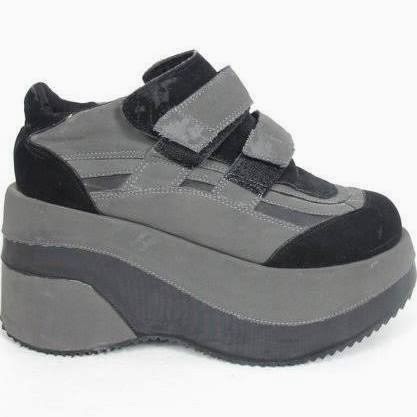For a long time I kept a pile of jeans
that didn’t fit.
Some, my prized Abercrombie size 2s, were from high school, and after the first time I lost weight on Medifast, I
rejoiced in being able to wear them again.
Some I bought during that first Medifast run,
or the second. Every so often I went to Hollister and tried on all the jeans on
the sale rack. It was a contest to see how small a size I could fit into, a
contest I told no one about, because of denial, and then shame. My mother’s
voice echoes in my head, saying, “Honey, this is a contest no one wins,” and
she’s right, but it didn’t matter at the time. I was drunk on the feeling of
buttoning those size 3s, stretchy victory wrapped around my hipbones.
For a long time I loved those jeans… for
all the wrong reasons.
I loved those high school Abercrombies because
they were high-waisted, and actually fit my body correctly. I have no hips.
Well, barely any hips. The difference between my waist and hip measurement is
about 2 inches. I loved every pair of Hollister jeans, because they symbolized
victory (albeit temporary victory) at the end of one of my numerous weight-loss
attempts. They were trophies I’d won in the battle against fat and unhealthy
and excess and gluttony and insert more twisted eating disorder imagery here. I
kept them because they were expensive and pretty and had low numbers on the
tags, but more so because getting rid of them meant failure. Getting
rid of my skinny jeans meant accepting that I’d never fit into them again, and that,
in my eyes, was accepting defeat.
I know we’re always told to dress the body we
have now. It’s in the same book with “be comfortable in your own skin,” “love
the skin you’re in,” “take pride in your body,” “you are your own worst critic,”
and other advice I agree with but can’t seem to internalize. It’s also logical,
because in most situations, you can’t walk around naked. You’ve got to wear
clothes. So they might as well fit, flatter, and make you smile when you see
your reflection in a store window (which in my case means they are often neon,
frequently sparkly, and include very short skirts). If you want to buy an
outfit and make your goal to fit into it, go for it – some people swear by it –
but owning an entire wardrobe full of clothes you don’t fit into is both
unhelpful and alarmingly negative. There’s nothing like starting your day
grabbing the one pair of jeans that fits off a pile of 11 pairs that are too
small. Plus, since you wear that pair so much, you start to wear through them
in the upper thigh area, and though it’s less about the size of your thighs and
more about the fact that you’re wearing the same pair every single day, as a
result, you spend the entire day hyperaware of your thighs rubbing together
when you walk.
From a financial perspective, dressing the body
I have right now would be an expensive undertaking for me because every five seconds my body has a new “right now.” Sometimes, it is completely
different at noon than it was at 7 a.m. If healthy bodies fluctuate, consider
the bodies of people who have been actively yo-yo dieting since freshman year
of college, with disordered eating habits tracing back to sixth grade. Some
months every day of my period is a different level of bloat. There aren’t
enough clothes in the world to account for the weirdness that goes on inside my
body on a daily basis. Even if there were, I can’t afford them, and I certainly
have nowhere to put them.
I work at a day camp, and on 70s dress-up day I
had a brilliant idea. I rounded up my flare leg skinny jeans and offered them
up to the guys as costumes. As I watched teenaged and 20-something dudes
parading around in my denim victory trophies, it dawned on me: I’m utterly ridiculous.
They’re Abercrombie jeans from 1999. I bought
those jeans when people were still worried that Y2K was going to transform all
of our technology into steaming piles of gooey red mush (okay maybe not
exactly, but forgive me because I just caught up on True Blood). I bought those
jeans before I kissed a boy, drove a car, cheated on a Spanish test, or left
the country. I bought those jeans before I lifeguarded, taught swimming, and found
my calling teaching English. I bought those jeans the year 10 Things I Hate
About You was released, but years before I took a page out of Julia Stiles’
character’s book and danced on tables in Munich, Berlin, Rome, Prague, Dublin,
Doolin, Amsterdam, and a tiny farming village in Southeast Holland called Well
that I was lucky enough to call home for a semester.
I bought those jeans the same year I bought a pair of platform Velcro sneakers from Costco and wore them under those jeans. PLATFORM. VELCRO. SNEAKERS. FROM COSTCO. I’m going to take a moment and let that sink in.
| The scene that inspired a lifetime of dancing on tables. |
I bought those jeans the same year I bought a pair of platform Velcro sneakers from Costco and wore them under those jeans. PLATFORM. VELCRO. SNEAKERS. FROM COSTCO. I’m going to take a moment and let that sink in.
 |
| They looked something like this. Except worse. |
People change. Bodies change. Careers, cities, relationships,
and styles change (see above picture: platform Velcro sneakers). Dreams change. Lives change. And so should denim.
Everything changes, and that’s a good thing. Maybe that means one day, if I work hard enough, my relationship with my body
and myself will change.
But I’m starting small.
Goodbye skinny jeans.
PS:
No comments:
Post a Comment